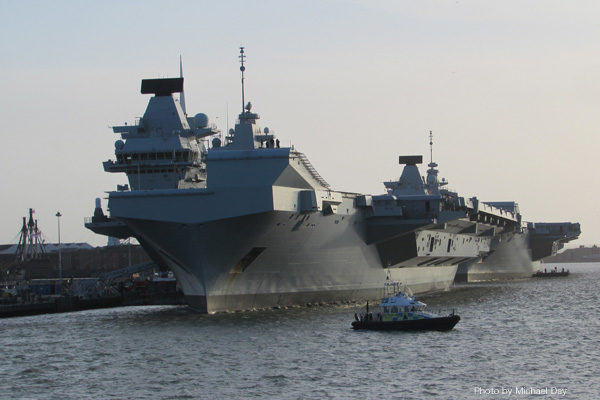In November 2020, British Prime Minister Boris Johnson announced a plan to dispatch HMS Queen Elizabeth Carrier-Strike Group to the Indo-Pacific region accompanied by units of the United Kingdom and North Atlantic Treaty Organization (NATO) allies. Behind the plan may be Britain’s opposition to Chinese President Xi Jinping’s attempt to put Hong Kong under control of the Chinese Communist Party in violation of the 1985’s Joint Declaration on the Question of Hong Kong.
In preparation for the deployment, the British carrier with five F-35B short take-off/vertical landing (STOVL) fighters of the Royal Air Force and 10 such fighters of the U.S. Marine Corps carried out joint drills with destroyers, frigates, and submarines from 13 nations of the NATO last autumn.
When the British carrier group is deployed in the Indo-Pacific region, the German Navy that has offered to deploy naval units in the region may join. Then, the British group should conduct joint exercises with the Quad naval forces comprising Japan, the United States, Australia, and India to counter China’s maritime expansion.
Blocking China’s west
F-35B fighters aboard the British carrier in Western Pacific will land at the U.S. Marine Air Station in Iwakuni, western Japan, for maintenance and supply. If helicopter destroyer Hyuga of the Japanese Maritime Self-Defense Force (JMSDF) is finished refitting of flight deck and guidance lights by the time of the HMS Queen Elizabeth’s arrival in Western Pacific, British F-35Bs may use the Hyuga for landing and takeoff exercises.
Surrounded by the Quad group geopolitically, China has had a loophole in its west. In a bid to secure a western bridgehead, China has built a framework so-called “17 plus one” with 17 Central and Eastern European countries. But the 17 countries include many NATO members. If the People’s Liberation Army (PLA) Navy attacks the British Carrier-Strike Group, NATO countries may be united for collective self-defense, bogging down China’s attempt to divide Europe.
After the UK offered to take part in the China-initiated Asian Infrastructure Investment Bank in 2015, other European countries followed suit. But the situation has turned round.
German and French Navies could join the British group
On February 19, French Defense Minister Florence Parly in an interview with French newspaper Le Figaro emphasized that French nuclear-powered attack submarine Emeraude submerged through the South China Sea. France has been concerned about China’s expansion into its Exclusive Economic Zone around French Polynesia, New Caledonia, and other French territories in the Pacific. In deciding to dispatch the nuclear-powered submarine to the South China Sea, France might have thought that if China’s international law violations in the South China Sea are left unchecked, Chinese actions could spread to waters around French territories in the Pacific. On February 20, French frigate Prairial conducted joint exercises with JMSDF and U.S. Navy in the area west of Kyushu.
If the German and French Navies join the British carrier group navigating in Western Pacific, the three major NATO naval powers will line up. They can send a strong message to China by their joint exercises with the Quad forces.
Fumio Ota is a senior fellow and a Planning Committee member at the Japan Institute for National Fundamentals. He is a retired Vice Admiral of Japan’s Maritime Self-Defense Force.


